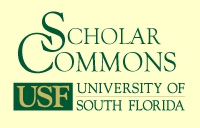Abstract
This paper focuses on the benefits of incorporating traditional ecological knowledge into the field of ecological restoration. Case studies on indigenous use of sweetgrass in New York State, U.S.A (Haudenosaunee Nation), and beargrass in Washington State, U.S.A (Quinault and Skokomish Nations), are presented. Both studies focus on the restoration of basketry plants by incorporating indigenous knowledge of changes in abundance of culturally significant plants; knowledge of sites appropriate for restoration of culturally significant plants; and knowledge of land management methods to restore species and/or habitats. Open-ended, semi-formal, and informal interviews were conducted with indigenous consultants familiar with the plant and/or habitat of interest. Traditional knowledge of appropriate restoration sites was used in a field experiment to re-establish sweetgrass in an area from which it is believed to have been extirpated. Traditional knowledge of anthropogenic burning was used to reintroduce fire in low-elevation beargrass habitats to manage both the resource and its environment. By incorporating traditional knowledge with published information on sweetgrass biology, it was found that two potential factors influencing its population in cultural gathering sites are unsustainable harvesting and the absence of controlled burns.
DOI
http://dx.doi.org/10.5038/2162-4593.9.1.4
Recommended Citation
Shebitz, Daniela. "Weaving Traditional Ecological Knowledge into the Restoration of Basketry Plants." Journal of Ecological Anthropology 9, no. 1 (2005): 51-68.
Available at: https://digitalcommons.usf.edu/jea/vol9/iss1/4
